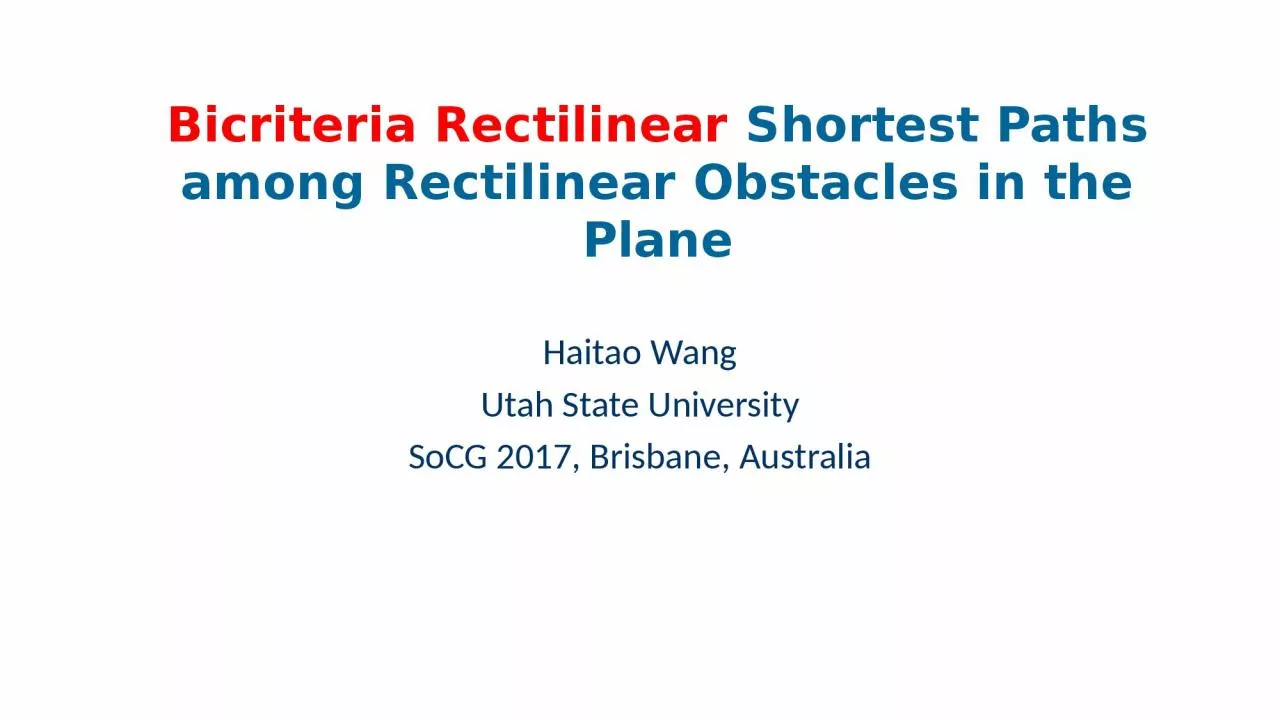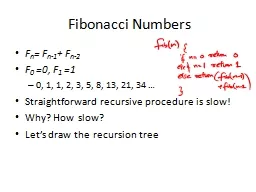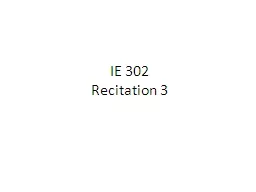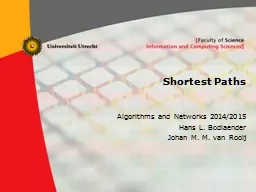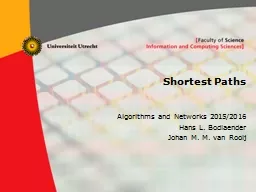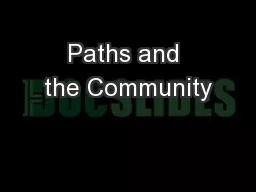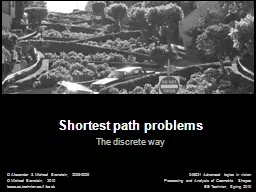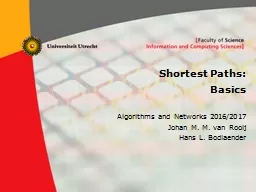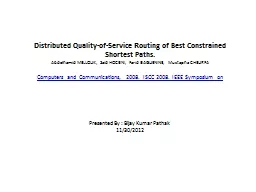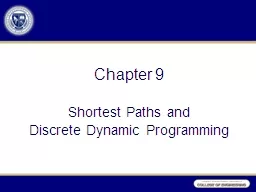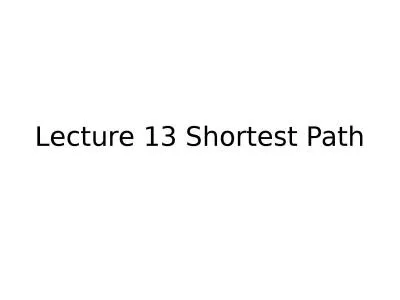PPT-Bicriteria Rectilinear Shortest Paths among Rectilinear
Author : BraveBlackbird | Published Date : 2022-08-03
Obstacles in the Plane Haitao Wang Utah State University SoCG 2017 Brisbane Australia The rectilinear minimumlink path problem Input a rectilinear domain P
Presentation Embed Code
Download Presentation
Download Presentation The PPT/PDF document "Bicriteria Rectilinear Shortest Paths ..." is the property of its rightful owner. Permission is granted to download and print the materials on this website for personal, non-commercial use only, and to display it on your personal computer provided you do not modify the materials and that you retain all copyright notices contained in the materials. By downloading content from our website, you accept the terms of this agreement.
Bicriteria Rectilinear Shortest Paths among Rectilinear: Transcript
Download Rules Of Document
"Bicriteria Rectilinear Shortest Paths among Rectilinear"The content belongs to its owner. You may download and print it for personal use, without modification, and keep all copyright notices. By downloading, you agree to these terms.
Related Documents

